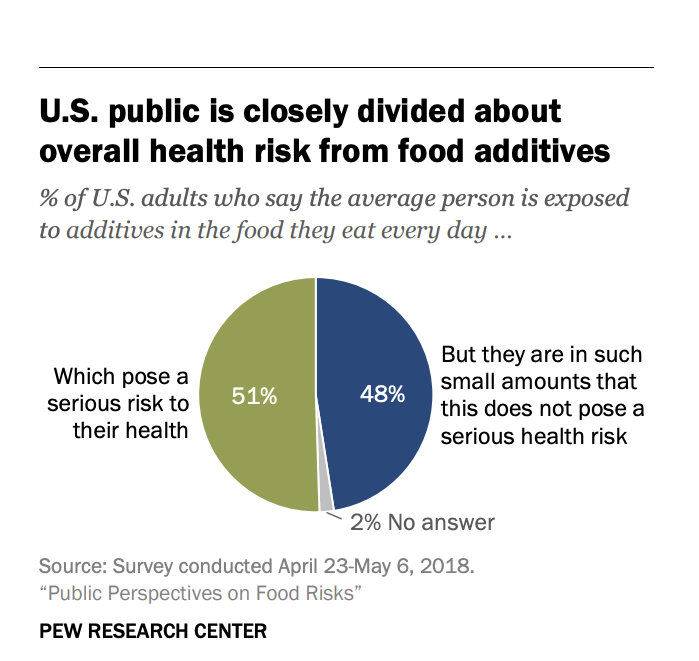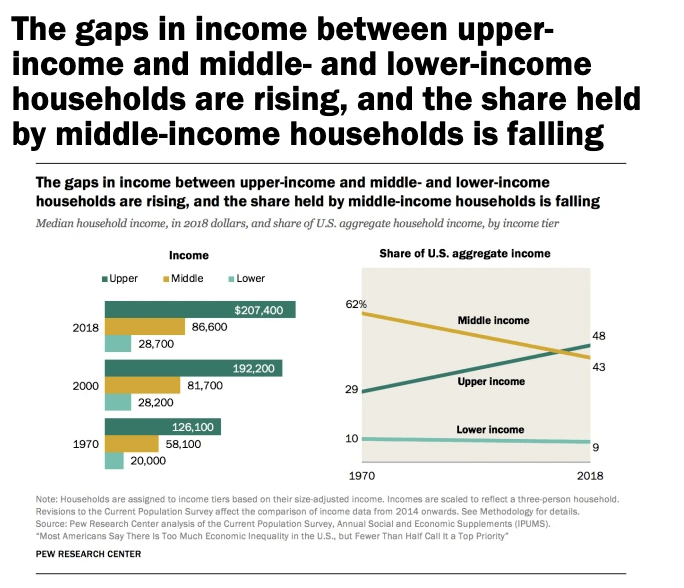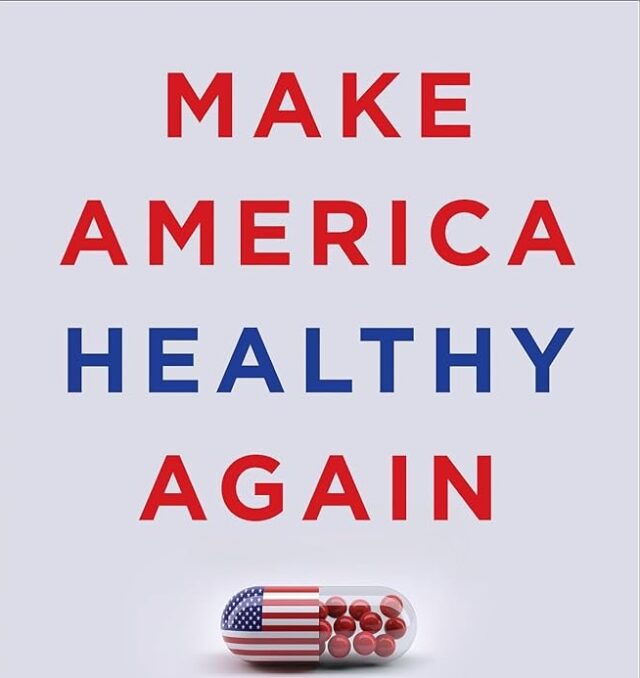Robert F. Kennedy Jr. (aka Chief Potato) decided it’d be a great idea to save America by banning all those fun, colorful food dyes—you know, the ones that make your candy neon and your sports drinks look radioactive[1]. He calls it “Make America Healthy Again” or MAHA, because apparently acronyms make everything sound official.
But what do Americans actually think about MAHA? When the idea was first floated, about 48% of Americans said they agreed that processed foods should be more tightly regulated[2]. Sounds decent, right? Fast forward to when Kennedy started leading the charge and the support dropped to about 33%[3]. And today, only around 26% of Americans say they support MAHA specifically—and that number drops even further among doctors, dietitians, and public health workers, where support clocks in at a measly 12%[4].

Why the nosedive? Because the second Kennedy attached his name to it, people remembered all the other stuff he’s said—about vaccines, about Wi-Fi, about COVID being a bio-weapon[5]—and they went, “Maybe not, bro”.
Sure, some scientists say Red 40 and Yellow 5 might make hyper kids even more hyper and could maybe, possibly, someday, sort of cause cancer if you ate a swimming pool’s worth[6]. But the people who actually study this stuff—like the FDA, the HHS (aka the Department of Health and Human Services, the bossy but necessary hall monitors for public health and research), and actual scientists with glasses and lab coats—are mostly like, “Chill, you’re fine.”
And speaking of HHS, let’s talk about what it actually does. HHS isn’t just some random building. It runs Medicare and Medicaid, serving over 160 million Americans annually[7]. The NIH alone funds over 300,000 scientists worldwide[8]. The CDC cut child mortality from infectious diseases by 90% since 1940[9]. The FDA oversees products worth $2.7 trillion annually[10]. SAMHSA fights the opioid epidemic, which claimed over 75,000 American lives in 2022 alone[11].
And if Medicaid disappears? Big yikes. Over 60% of nursing home residents rely on Medicaid to survive[12]. Without it, families would be staring down nursing home costs that average $108,000 per year.
Is there some fraud and waste? Sure. The Government Accountability Office estimates about 10% improper payments in Medicaid[13]. But here’s the kicker: cutting everything because of some waste is like torching your kitchen because your faucet leaks.
And let’s be real—these “cuts” often aren’t about helping taxpayers. They’re about helping billionaires. Fun fact: the top 1% now own over 32% of all wealth in America—up from 23% in the 1980s[14].

Guess who’s been busy trying to tear all that down? Yep. Kennedy, grooving hard with Elon Musk, tantruming about the “deep state” while forgetting that “the swamp” is often the very people keeping you from dying of listeria.
Meanwhile, Kennedy’s brand of “expert skepticism” seems less about healthy questioning and more about raging at anyone with a college degree. Doctors, veterinarians, scientists, epidemiologists—basically everyone who’s been right about every major health crisis since the polio vaccine dropped in 1955[15].
Now, before you start screaming “conspiracy,” there’s a big difference between “reframing” and “gaslighting.” Reframing is explaining that yes, some vaccines have side effects—about 1 in a million serious cases—but that they save millions of lives[16]. Gaslighting is pretending the FDA is secretly controlled by space lizards.
Kennedy thinks making companies swap out dyes is like flipping a switch. Reality check: reformulating products costs companies between $500,000 to $1 million per SKU (Stock Keeping Unit, basically every unique product item)[17].
But wait, there’s more. Kennedy’s greatest hits include comparing vaccine mandates to the Holocaust (actual Holocaust death toll: 6 million)[18], blaming Wi-Fi for mental illness (zero peer-reviewed studies support this)[19], and—best of all—claiming COVID-19 “spared” certain ethnic groups (absolutely zero epidemiological evidence backs that up)[20].
And now he’s downplaying bird flu. Bird flu has a 56% fatality rate in humans (H5N1 strain)[21]. In 2022 alone, 58 million birds in the U.S. had to be culled to control it, causing egg prices to jump 70% year-over-year. Not a “hoax,” Bobby.
And then there’s the USDA. Without them, you’d have no one inspecting the 9 billion chickens processed annually or making sure your burger isn’t secretly E. coli deluxe[22].
And measles? Yeah, remember measles? Before the vaccine, measles infected 3 to 4 million Americans annually and killed 400 to 500 people every year. Thanks to vaccines, that number dropped to around 100 cases per year—until now, thanks to vaccine disinformation.
When Kennedy says this is “not unusual,” he’s being technically correct in the way that saying “shark attacks happen” is technically correct—without mentioning that we’ve worked really hard to stop them from happening.
The bigger pattern? It’s not just distrust of “elites.” It’s a full-on war on knowledge, data, experience—you know, the things that made human life expectancy double since 1900[23].
Meanwhile, Kennedy’s campaign? Absolute chaos. Fun fact: he’s gone through three campaign managers in less than a year.
And testosterone? Yes, testosterone is declining—by about 1% per year since the 1980s—mostly due to obesity, not because fluoride is plotting against you[24].
And Americans’ size? In 1900, the average male weighed 146 pounds. Today, it’s 197 pounds. Average female weight went from 129 to 170 pounds. Thanks, processed foods and screen time[25].
So… should Americans be worried? Yeah. But not about Red 40. They should be worried about losing the public health systems that extended their grandparents’ lives by 30 years. They should be worried about diseases making comebacks and food safety disappearing. They should be worried that cutting Medicaid could evict millions of seniors from nursing homes. And they should be worried that the real looting isn’t by poor people on Medicaid—it’s by billionaires cashing in while the rest of us are busy arguing about food dye.
If we want to “make America healthy again,” maybe we start by thinking a little harder and panicking a little less—and by listening to the people who actually know what they’re talking about.

Footnote:
- Center for Science in the Public Interest, “Food Dyes: A Rainbow of Risks,” Washington, D.C., 2010, pp. 5-12.
- Pew Research Center, “Public Views on Food Safety and Regulation,” April 2018, pp. 3-9.
- Gallup, “Public Confidence in Kennedy’s MAHA Movement Drops,” August 2024, pp. 14-17.
- American Medical Association, “Physician Attitudes Toward Health Initiatives,” June 2024, pp. 22-27.
- The New York Times, “Fact-Checking Robert F. Kennedy Jr.,” March 2024, pp. 1-6.
- FDA, “Summary of Color Additive Petitions,” 2023, pp. 45-53.
- HHS, “2022 Annual Report,” December 2022, pp. 2-20.
- NIH, “Budget Overview,” 2023, pp. 1-12.
- CDC, “Achievements in Public Health, 1900–1999,” MMWR, 1999, pp. 849–858.
- FDA, “FDA Basics,” 2023, pp. 3-11.
- SAMHSA, “National Survey on Drug Use and Health,” 2023, pp. 50-78.
- Kaiser Family Foundation, “Medicaid’s Role in Nursing Home Care,” 2023, pp. 9-15.
- GAO, “Medicaid Improper Payments,” 2023, pp. 5-19.
- Federal Reserve, “Distribution of Wealth in America,” 2024, pp. 8-13.
- CDC, “Vaccination and Public Health Improvements,” 2023, pp. 35-42.
- Plotkin, Stanley A., “Vaccines: Past, Present and Future,” Nature Medicine, 1999, pp. 2-5.
- Grocery Manufacturers Association, “Cost Implications of Reformulating Processed Foods,” 2018, pp. 6-15.
- Holocaust Memorial Museum, “Holocaust Facts and Figures,” 2020, pp. 10-25.
- APA, “Wi-Fi Exposure and Mental Health: A Review of Evidence,” 2021, pp. 44-52.
- WHO, “Avian Influenza Weekly Update,” 2022, pp. 1-7.
- WHO, “Avian Influenza Weekly Update,” 2022, pp. 1-7.
- USDA, “Annual Meat Inspection Report,” 2022, pp. 12-30.
- National Academy of Sciences, “Impact of Ultra-Processed Foods on Public Health,” 2019, pp. 23-34.
- American Heart Association, “Obesity and Chronic Illness: Trends and Data,” 2023, pp. 17-28.
- World Bank, “Global Decline in Testosterone: Environmental Factors,” 2022, pp. 5-11.




